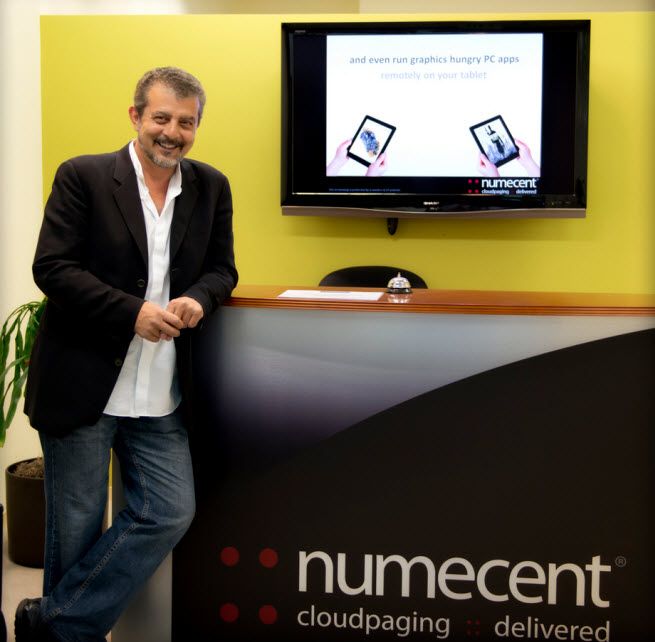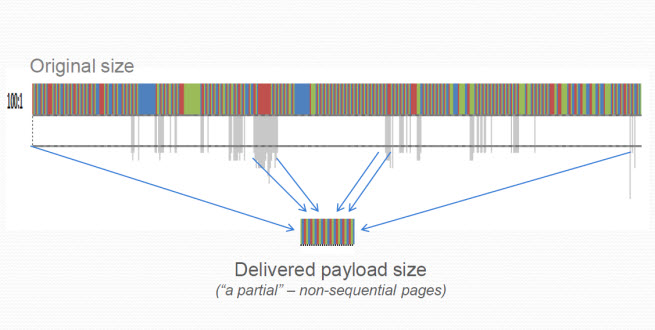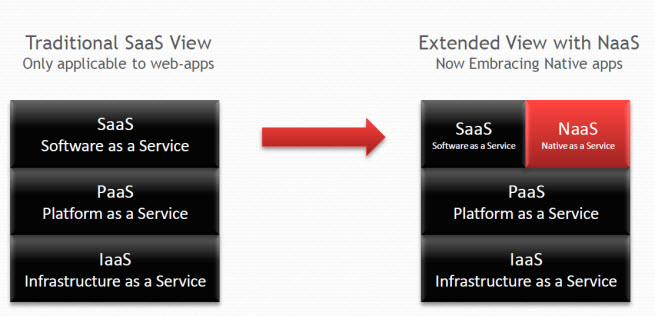Stefan Ried, the principal analyst at market researcher Forrester Research, said Numecent was impressive.
“The approach to understand, decompose, cache, and reassemble pixel-heavy legacy desktop applications like Photoshop, CAD systems, and even games is ground breaking,” Reid said in an e-mail to VentureBeat. “All other solutions on the market are basically compressing pixels on a remote terminal servers and transporting them to the client that might not be able to run the heavy app directly. Numecent adds much more logic to it.”
He added, “To show the dimension of the innovation I might compare the way you can access remote screens and apps with the music industry. You remember the Sony Walkman Cassette player, it was able to support tricks like the Dolby noise compression 20 years back. This is where most of today’s virtual desktop infrastructure (VDI) is. In contrast, Numecent really decompose the screen, understand, compress and caches them at the remote device. This is more similar to how we deal with MP3 files today instead of compact cassettes any more. So the Numecent technology has the potential to redefine the VDI market similar to they way MP3 redefined the mobile music market. It will push VDIs beyond corporate intranets into the public Internet.
Reducing the time and hassle — a concept known as friction — for users to download software is a big deal, since about 40 percent of large downloads are typically aborted, based on information that Kent got from a game publisher. Users may get frustrated, or the downloads may be cut off because of a bad connection. Either way, it results in a lost sale for a software company. With Numecent, that friction goes away. Software vendors can more easily offer friction-free free trials or beta tests and get much better conversion rates, or people actually buying the software.
“Last year we showed how cloudpaging solves the download and installation problems by making cloud delivery almost instantaneous,” said Art Hitomi, co-founder and CTO of Numecent. “This year, cloudpaging also solves the problem of subscription licensing from the cloud. With NaaS, we are now delivering all three benefits in a unified and effortless cloud service. To enjoy these benefits ISVs do not need to make any changes to their software or build any infrastructure to start delivering from the cloud. We did all the hard work so that ISVs can focus on increasing their revenues and gross-margins.”
For those who want a deeper dive into the technology, Kent says it isn’t like the Softricity technology that Microsoft bought in 2006 or the Appstream technology that Symantec acquired (Symantec also acquired Altiris later). Kent calls those legacy “application virtualization” offerings. Numecent acquired a company, Endeavors Technology, in 2008. That company did something similar before cloudpaging was invented. App virtualization builds a container for an app to deploy without actually installing it. That’s a small part of what Numecent does, Kent said. During a litigation stage for the technology, companies such as Microsoft became licensees of Endeavor’s patents. The legacy apps didn’t work well because they focused on on-premise deployment, could handle only maybe half the applications, and had severe performance and functionality limits. They could only do progressive downloads.
Kent said that when he joined Numecent in 2010, his developers absorbed the good attributes of app virtualization and then incorporated it into cloudpaging. In contrast to remote solutions such as streaming that don’t scale well, cloudpaging does not push pixels from the cloud to the client. The technology transmits “previrtualized” native software instructions a page at a time and on demand [see the picture above]. Those instructions are executed on the user’s machine in a transient manner and at full performance. The cloudpaged native application can reduce network usage by up to 95 percent and become web-like with minimal server footprint. And it works with the cloud and will all apps, even device drivers. It also has license virtualization built-in, which is essential for software companies, and it runs on a public cloud.
“To some up, Cloudpaging incorporates some of the concepts of application virtualization to avoid installation but has moved a different direction to embrace cloud-delivery,” Kent said. “It is 30 percent of what we do but do very well. Another way to look at it is that these legacy solutions are like ‘steam-ships’ and cloudpaging is like the airplane. Both do transport but with vastly different results.”
Kent said it might take a half hour or so to cloudify an app such as Photoshop with cloudpaging. And the app can run with just 6.5 percent of its total file size downloaded. Numecent has spun off a division, Approxy, that focused on cloudifying online games. Streamed games haven’t taken off in part because they use a lot of bandwidth and that means they use a lot of battery power, Kent said.
To date, Numecent has raised $23 million. It has 30 employees.
VentureBeat's mission is to be a digital town square for technical decision-makers to gain knowledge about transformative enterprise technology and transact. Learn More



